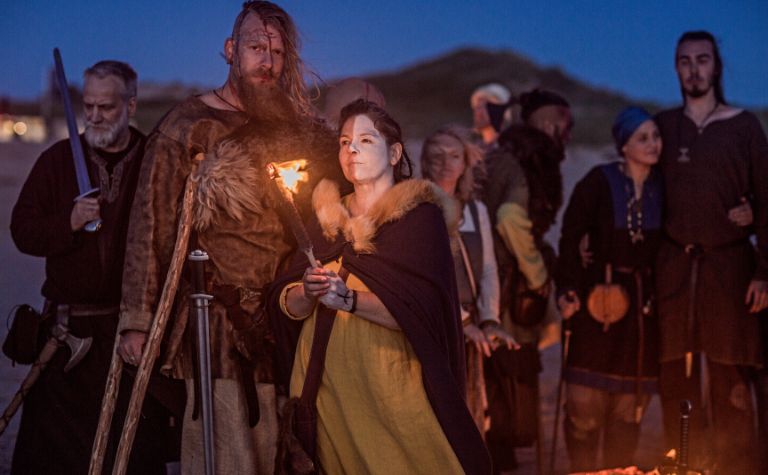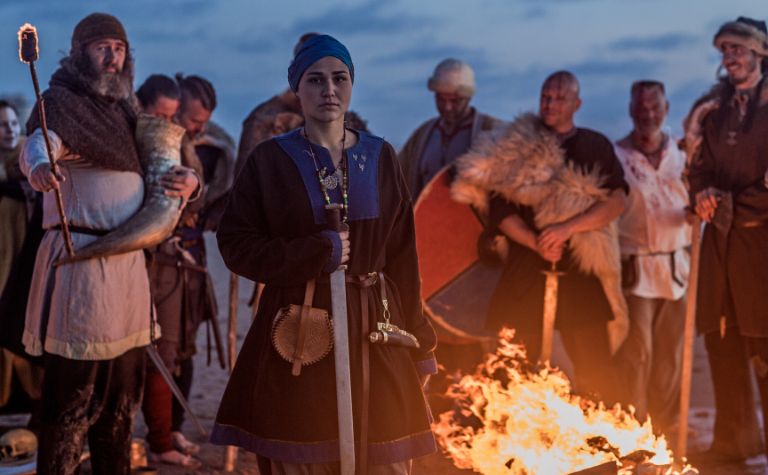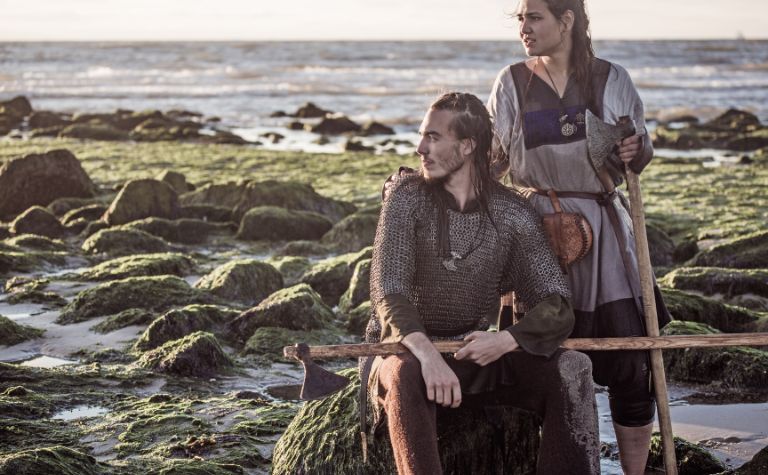As much as people today love the Vikings, there’s little surviving information written by them that accurately depicts their lives and culture.
Instead, almost everything scholars know about Vikings comes from archaeological excavations and the written accounts of outsiders.
That often leaves people confused about Viking life; for example, did Vikings practice polygamy?
The wealthiest Vikings may have practiced polygamy. However, it certainly wasn’t the norm.
Vikings had stringent laws governing marriage, and Viking females had clearly defined rights and the ability to divorce their husbands.
Therefore, it was costly to have a wife, much less many.
This article will explain why most Vikings only had one wife and the rules governing Viking divorce proceedings. It will also discuss when the typical Viking man or woman got married.

How Many Wives Could a Viking Have?
In theory, a Viking could have as many wives as he wanted. In reality, though, most only had one because that’s all they could afford. Because Vikings were pagan, they weren’t restricted by Christian values of monogamy.
However, there were very strict rules in place governing marriages.
Today, movies and television shows often portray Viking women as equals to their male counterparts, showcasing incredible shield maidens and Viking queens.
Strictly speaking, that wasn’t accurate. The Vikings, like most societies at that time, lived in a male-dominated world. [1]
While there were some shield-maidens and even notable instances of women coming into power, they were few and far between.
Primarily, women played the same role in Viking households as women anywhere.
They raised children, managed the family, and cooked the food.
However, when it came to women’s rights, the Vikings were pretty advanced, specifically regarding marriage. Firstly, women had some say in who they married.
Arranged marriages still played a role in Viking society, but if a woman was not pleased with her potential match, she could decline to marry him.
Women could also initiate divorce proceedings if they were unhappy in their marriages.
Once the divorce was approved, in most cases, the husband would have to return the dowry he received for his wife to her family.
Additionally, a man was required to provide financially for all his wives and children.
Therefore, the more wives (and children) he had, the more money he’d have to supply to take care of them and keep them happy. For that reason, most Vikings had just one wife.
They often had mistresses or concubines, though, and many slept with their slaves.

Could A Viking Get Divorced?
Vikings could and did get divorced. Both males and females could initiate divorce proceedings, and the women had as many rights as the men in that situation.
Most of the reasons for divorce apply to both males and females.
For example, either spouse could request a divorce for any of the following reasons: [2]
- If either spouse caused “great wounds” to the other
- If the two spouses genuinely disliked, hated, or angered each other
- If either spouse mistreated the other’s family members
- If there was an irreparable disagreement between a spouse and their in-laws
- If one spouse humiliated the other, particularly in front of witnesses
- If either spouse was excessively jealous of the other
- If either spouse went out into public dressed as the other gender (i.e., if a man dressed effeminately or a woman dressed in men’s clothing)
- If there was a general incompatibility between the two
Furthermore, there were a few additional reasons a woman could ask for a divorce.
If her husband tried to move her to another country or settlement, or if he refused to have sexual relations with her for three consecutive years, she could divorce him.
Also, if the married couple was impoverished and couldn’t support themselves, the wife could request a divorce. (Additionally, the wife or husband’s family could petition that the couple be forced to divorce as they’d be relying on their families to support them.)
Contrarily, a man could request a divorce (or demand a worse punishment) if his wife committed adultery; however, he was free to sleep with anyone outside his marriage bed without being accused of adultery.
The only way a man could commit adultery would be to sleep with a fellow Viking’s wife. That was not grounds for his wife to divorce him, however. [3]
Basic Viking Divorce Rules
Regardless of whether the man or woman was seeking a divorce, the procedure followed was the same.
Whichever person wanted the divorce had to state that fact in front of witnesses three times.
First, the aggrieved spouse would take witnesses into the marital bedroom and declare their desire for a divorce there.
Then, they’d do the same thing at their home’s front door and finally in front of the king, jarl, or another rule-maker at a town meeting.
Once the divorce was official, the couple’s property was divided between them. Depending on who wanted the divorce, this part happened differently.
For example, if both parties agreed that they wanted a divorce, their property was divided in the following manner:
- The husband regained the bride price he paid for his wife and 2/3 of all communal property.
- The wife regained her dowry, morning gift, and 1/3 of all communal property.
If the wife wanted a divorce, the property was distributed as follows:
- The wife regained her dowry and her morning gift.
- The husband received all their communal property and (depending on the reason for the divorce) could potentially regain his bride price.
If the husband wanted a divorce, the property was distributed as follows:
- The husband would receive 2/3 of all communal property.
- The wife would regain her dowry, her morning gift, 1/3 of all communal property, and could keep her bride price.
This system of penalizing the party asking for divorce ensured that Vikings and their wives did not dissolve their marriages lightly, on a whim, or without careful consideration.

When Did Vikings Typically Get Married?
Women in the Viking age typically married when they were 12 to 15. Men were sometimes older, but nearly everyone in the Viking community – both men and women – married before age 20. [4]
The Viking age of adulthood was approximately 16 years old for men, but most 12-year-old Scandinavians could thoroughly run a household if need be. [5]
In a culture where the average life expectancy was between 40 and 50 years old, that’s not as unusual as it seems.
Final Thoughts
There was likely some polygamy in the Viking community. However, only the wealthiest Vikings could practice polygamy due to the restrictions governing marriage.
References:
[1] Source
[2] Source
[3] Source
[4] Source
[5] Source
